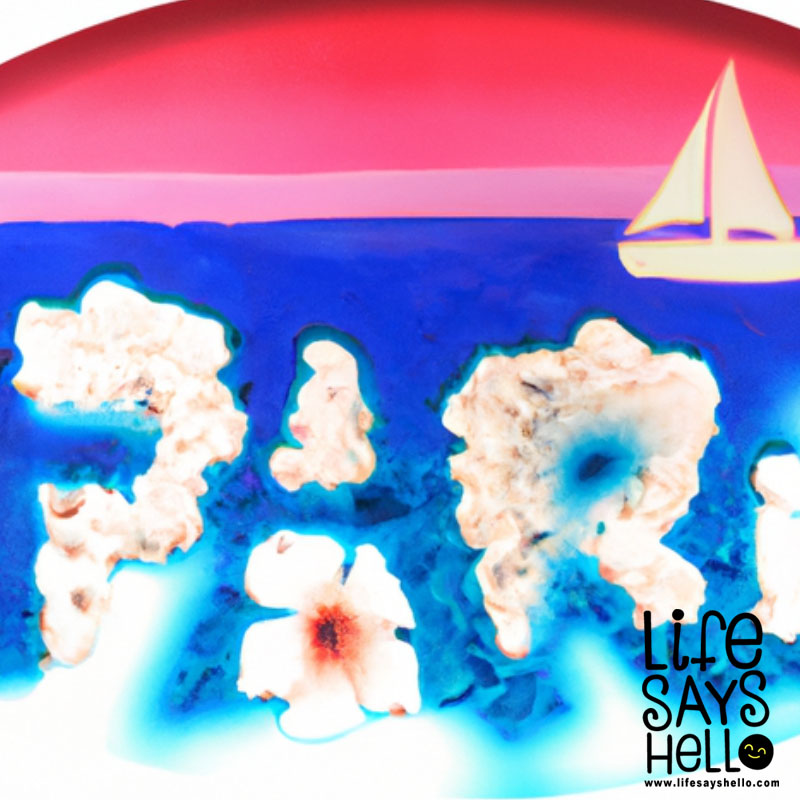Discovering Oahu: The Island Home to Pearl Harbor and Its Historical Significance

Embark on a journey to uncover the rich history and breathtaking beauty of Oahu, the island that houses the world-renowned Pearl Harbor, and delve into the events that shaped the course of history.
Embark on a journey to uncover the rich history and breathtaking beauty of Oahu, the island that houses the world-renowned Pearl Harbor, and delve into the events that shaped the course of history. Often referred to as "The Gathering Place," Oahu is the third-largest island in the Hawaiian archipelago and holds a significant place in the annals of history. In this article, we will explore the island of Oahu, the history of Pearl Harbor, the infamous attack that propelled the United States into World War II, and the importance of visiting the memorial sites today.
The Island of Oahu
Overview
Oahu, situated in the heart of the Pacific Ocean, is a stunning tropical paradise that is part of the Hawaiian archipelago. As the third-largest island, Oahu spans approximately 596 square miles and is home to roughly 1 million residents. The island is well-known for its picturesque landscape, boasting lush rainforests, pristine beaches, and majestic mountain ranges. Oahu is also home to the bustling city of Honolulu, the capital of Hawaii, and the world-famous Waikiki Beach.
Notable Features and Attractions
Oahu is a treasure trove of natural beauty and cultural attractions. The island's most famous landmark is Diamond Head, an extinct volcanic crater that offers breathtaking views of Waikiki and the surrounding area. The North Shore, a haven for surfers, is home to some of the world's most renowned surf breaks, including Banzai Pipeline and Sunset Beach.
In addition to its natural wonders, Oahu is steeped in history and culture. The Polynesian Cultural Center, located in Laie, showcases the diverse traditions and customs of the Polynesian people, while the Bishop Museum in Honolulu houses an extensive collection of Hawaiian artifacts and historical exhibits.
However, it's the island's connection to Pearl Harbor that solidifies Oahu's place in history.
The History of Pearl Harbor
Early History and Significance in Hawaiian Culture
Long before the arrival of Western explorers, Pearl Harbor, or "Wai Momi" (meaning "pearl waters"), was a vital part of Hawaiian culture. The harbor's abundant fish and fertile land made it an ideal location for the ancient Hawaiians to settle and thrive. Additionally, the harbor's natural resources, including pearl-producing oysters, were highly prized by the island's inhabitants.
Development of the Harbor and U.S. Naval Presence
The strategic importance of Pearl Harbor was recognized by the United States in the 19th century, as the harbor provided an ideal location for a naval base in the Pacific. In 1887, the United States signed a treaty with the Kingdom of Hawaii, allowing the construction of a coaling and repair station at Pearl Harbor. Over the years, the harbor's facilities were expanded, and by the early 20th century, Pearl Harbor had become a crucial naval base for the United States.
The Attack on Pearl Harbor
The Events Leading Up to the Attack
Tensions between the United States and Japan had been brewing for years, primarily due to Japan's aggressive expansion in Asia and the Pacific. In an effort to curb Japan's ambitions, the United States imposed economic sanctions, including an embargo on oil and other vital resources. With Japan's economy and military capabilities severely hampered, the Japanese government decided to take drastic action: a surprise attack on the U.S. naval base at Pearl Harbor.
A Detailed Account of the Attack on December 7, 1941
On the morning of December 7, 1941, the Japanese launched a surprise attack on Pearl Harbor, intending to cripple the U.S. Pacific Fleet and buy time for Japan to solidify its territorial gains. The attack, which involved more than 350 Japanese aircraft, targeted the U.S. battleships, cruisers, destroyers, and aircraft stationed at the harbor.
In just under two hours, the Japanese inflicted significant damage on the U.S. Pacific Fleet, sinking or heavily damaging eight battleships, three cruisers, and four destroyers. Additionally, more than 180 U.S. aircraft were destroyed, and approximately 2,400 Americans were killed, with another 1,200 injured.
The Aftermath and Impact on the United States and World War II
The attack on Pearl Harbor shocked the United States and the world. On December 8, 1941, President Franklin D. Roosevelt declared war on Japan, marking the United States' entry into World War II. The attack also united the American people, who rallied behind the war effort with a newfound determination to defeat the Axis powers.
Visiting Pearl Harbor Today
The USS Arizona Memorial and Other Historical Sites
Today, visitors to Oahu can pay their respects to the fallen heroes of Pearl Harbor by visiting the USS Arizona Memorial, which commemorates the 1,177 crew members who perished during the attack. The memorial, accessible only by boat, is built over the sunken remains of the USS Arizona, allowing visitors to reflect on the tragic events that unfolded on that fateful day.
Other historical sites at Pearl Harbor include the USS Bowfin Submarine Museum and Park, the Battleship Missouri Memorial, and the Pearl Harbor Aviation Museum.
The Pearl Harbor National Memorial and Its Significance
The Pearl Harbor National Memorial, established in 1964, encompasses the USS Arizona Memorial and other sites related to the attack. The memorial serves as a poignant reminder of the sacrifices made by those who served during World War II and the resilience of the American spirit.
Tips and Advice for Visiting Pearl Harbor and Oahu
When planning a visit to Pearl Harbor and Oahu, it's essential to set aside ample time to explore the various historical sites and museums. It's also recommended to book tours and tickets in advance, as the USS Arizona Memorial is a popular attraction with limited daily capacity. Don't forget to bring sunscreen, a hat, and comfortable walking shoes, as you'll likely spend several hours outdoors.
Conclusion
Understanding the history of Pearl Harbor and its location on Oahu is crucial in appreciating the events that shaped the course of history. By visiting the memorial sites and paying respects to the fallen heroes, we honor their sacrifices and ensure that their stories are never forgotten. So, as you plan your next trip to the Hawaiian Islands, be sure to include a visit to Oahu and the Pearl Harbor National Memorial, and immerse yourself in the history that forever changed the world.




Comments